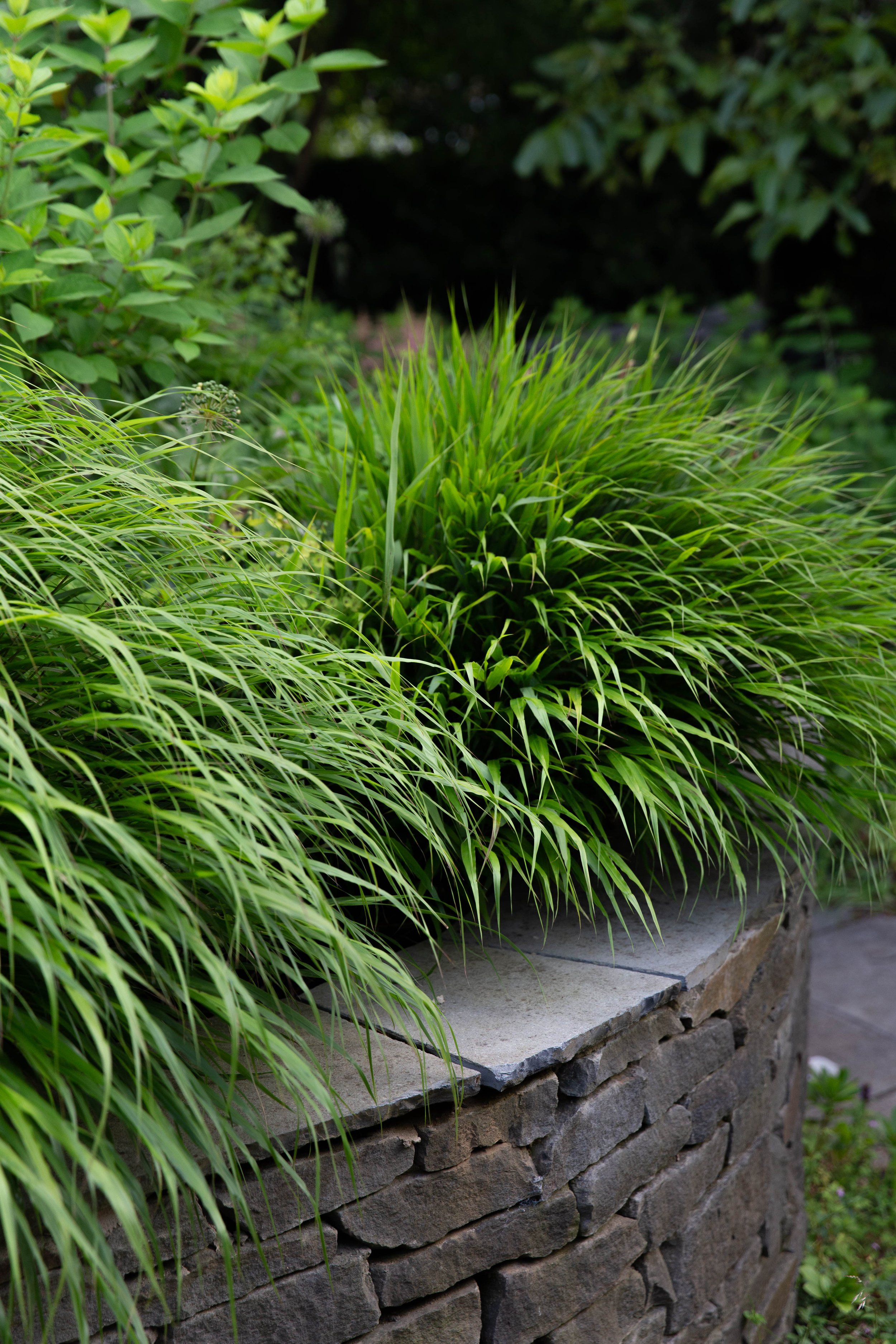Plant guide: Hakonechloa macra
A tactile, elegant and arching grass, Hakonechloa macra deserves a spot in any garden.
Don’t be put off by the long botanical name – Hakonechloa macra, or Japanese forest grass, if you prefer, is a really useful plant, that is perfect as ground cover, or at the front of beds. We also love it in pots, or growing over walls and hard landscaping, where its arching form breaks up straight lines.
It’s super easy to grow, tolerant of a range of different conditions, and its delicate leaves turn reddy-brown in Autumn, giving it multiple seasons of interest.
Botanical name: Hakonechloa macra
Plant type:
Deciduous perennial
It will grow back each year, but dies back each winter
Growing conditions:
This is an unfussy plant, that can adapt to lots of different growing situations. It can cope with spots in sun, part shade or full shade, in any soil type. It prefers a moist but well-draining soil, so if it is planted in a dry or sandy spot, then take care to water through the warmer months.
It grows up to about 30cm tall, so pick a spot at the front of a border, underneath a tree canopy, or in a pot, so it can be admired.
How to plant:
Pot grown plants can be put into the garden in Spring or Autumn. Dig a hole a little wider than the pot and to the same depth. Carefully remove the plant from the pot, place in position, and back fill the hole. (See our guide to planting out container grown plants for more info.)
Care:
Resistant to pests and diseases, and happy with a wide range of conditions, this doesn’t need much ongoing care.
Cut back the old leaves either at the start of Winter, or leave in place over Winter to provide structure and cut back to the ground once the new shoots are just starting to appear in Spring.
Grow with
We love to grow Hakenochloa alongside Astrantias, where its bright green strap-like leaves contrast beautifully with the pin-cushion flowerhead of Astrantia.
It’s also great planted en masse around trees or along walls or other garden edges. It looks especially striking used to soften hard lines of modern architectural materials, such as a Corten steel.



